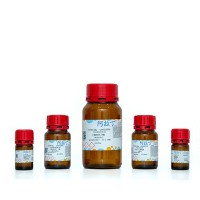Chemical Cleavage of Mismatch: Theory and Clinical Applications
Direct nucleotide sequencing is the reference standard critical to all molecular biology whether it is used for the elucidation of an entire genome or the characterization of a specific mutation. Sequencing protocols were initially developed using either dideoxy nucleotides (1 ) or chemicals (2 ), although the latter became less attractive because of the toxic nature of the chemicals used. It is obvious that if sequencing was less expensive, then there would be no need for mutation-scanning techniques. However, although fluorescent technology is improving and capillary electrophoresis is replacing polyacrylamide gel electrophoresis, the cost of consumables is rising and laboratories are, therefore, forced to use other techniques to detect mutations. Mutation-scanning techniques need to detect new mutations within the entire coding region of a gene and there are several methods available to scan for sequence changes in either cellular RNA or genomic DNA. These include denaturing gradient gel electrophoresis (DGGE) (3 ) (see Chapter 8 ), chemical cleavage of mismatch (CCM) (4 ), enzyme mismatch cleavage (EMC) (5 ,6 ), single-stranded conformation polymorphism (SSCP) (see Chapter 7 ) (CR7 ), heteroduplex analysis (HA) (8 ), conformation-sensitive gel electrophoresis (CSGE) (9 ), the protein truncation test (PTT) (10 ); and, more recently, denaturing high-performance liquid chromatography (DHPLC) (11 ,CR12 ) (see Chapter24 ). The most critical factor that determines the success of any gene screening protocol is the sensitivity of the detection technique. The sensitivities of these methods vary greatly depending on the size of DNA/RNA template screened. For example, SSCP has a sensitivity of >95‰ for fragments of 155 bp, but this is reduced to only 3‰ for 600 bp (13 ). Once optimised, DGGE has a sensitivity of approx 99‰ for fragments of up to 500 bp (14 ), and CSGE has a sensitivity of 90–100‰ for fragments of up to 450 bp (15 ). CCM and EMC, on the other hand, have sensitivities of 95–100‰ for fragments >1.5 kb in size ( 16 ,17 ) and are ideal for screening compact genes where more than one exon can be amplified together using genomic DNA as the template. All of these techniques detect sequence changes such as nonsense, frame shift, splice site, and missense mutations, as well as polymorphisms, however, the PTT screens only for truncating mutations and is predicted to have a sensitivity of >95‰ and can be used for RNA or DNA fragments in excess of 3 kb.
![预览]()






